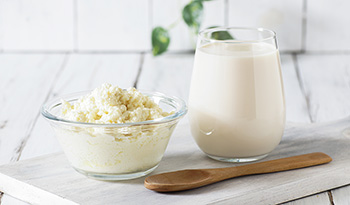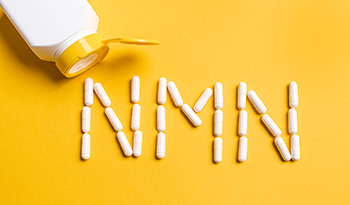Nutrient Synergy: What To Take Together For Maximum Absorption

Key Takeaways
- Nutrient synergy is the concept of consuming specific nutrients together to maximize their benefits, such as improving absorption and enhancing efficiency.
- A diet rich in whole foods is the best starting point, as these synergistic pairings often occur naturally.
- Supplements can also be used in smart combinations to fill any dietary gaps and support specific health goals.
What Is Nutrient Synergy?
Nutrient synergy is the idea that nutrients often work best in pairs or groups rather than alone. In biochemistry, many vitamins and minerals act as cofactors — helpers for enzymes that perform critical processes like energy production, hormone synthesis, and immune defense. When the proper nutrients are present together, they can boost each other’s absorption and activity.
This concept has its roots in nutrition science dating back to the early 20th century, when researchers noticed that deficiencies in one nutrient often affect the body’s use of another. For example, without enough vitamin D, your body struggles to absorb calcium, even if your diet is calcium-rich.
Whole foods naturally provide nutrients in synergistic combinations. Think of citrus fruits that pair vitamin C with plant-based iron, or salmon, which contains vitamin D alongside omega-3 fatty acids. In contrast, isolated nutrients in supplements may require careful pairing to mimic these natural synergies.
Examples Of Synergistic Nutrient Pairings
Below are some of the most common examples of synergistic nutrient pairings, why they work together, how to get them through foods, and tips on taking them via supplements.
Vitamin D + Calcium
- Why they work together: Vitamin D increases calcium absorption in the gut by regulating calcium transport proteins.1 Without adequate vitamin D, much of the calcium you consume passes through your system unused.
- Best sources: Fatty fish (like salmon), dairy products, fortified plant milks, leafy greens
- Supplement tip: Look for vitamin D3 paired with calcium for optimal absorption (or make sure you’re consuming calcium-rich foods while taking vitamin D) and with vitamin K2 to ensure that the calcium you absorb is directed into bones and teeth rather than soft tissues like arteries.
Iron + Vitamin C
- Why they work together: Vitamin C converts non-heme iron — a form of iron found in plants that is less bioavailable than iron from animal foods — into a form your body can absorb more easily.2
- Best sources: Spinach with lemon juice, lentils with tomatoes, fortified cereals with berries
- Supplement tip: Take iron with a small amount of vitamin C-containing fruit or a vitamin C capsule. Avoid pairing with coffee, tea, or high-calcium foods at the same time, which can reduce absorption. If you’re supplementing, liposomal vitamin C can be especially effective because it’s encased in fat-like particles (liposomes) that protect it from breakdown in the digestive tract, leading to higher absorption and less GI upset compared to standard ascorbic acid.
Omega-3s + Antioxidants (Vitamin E, Polyphenols)
- Why they work together: Omega-3 fatty acids are prone to oxidation. Antioxidants like vitamin E protect them from breakdown, preserving their heart, brain, and anti-inflammatory benefits.
- Best sources: Salmon with spinach, walnuts with berries
- Supplement tip: Choose fish oil supplements that include vitamin E or take them with antioxidant-rich meals (berries, leafy greens, carrots, and beets are all examples of antioxidant-rich foods).
Zinc + Quercetin
- Why they work together: Quercetin acts as a zinc ionophore, helping zinc enter cells where it supports immune function.3
- Best sources: Apples, onions, capers (quercetin) paired with pumpkin seeds, oysters (zinc)
- Supplement tip: For immune support, pair a moderate-dose zinc supplement with quercetin-rich foods or a quercetin supplement.
Probiotics + Prebiotics: The Gut Health Power Duo
Probiotics are beneficial bacteria that help maintain a healthy gut microbiome, support digestion, regulate immune function, and even influence mood through the gut-brain axis.4,5 They can be found in fermented foods (like yogurt, kefir, sauerkraut, and kimchi) or taken as supplements.
But here’s the catch: Probiotics are living organisms. And like any living thing, they need to be fed to survive and thrive. That’s where prebiotics come in.
Prebiotics are specific types of dietary fiber that act as “fertilizer” for beneficial gut bacteria. They’re found in foods like onions, garlic, leeks, asparagus, bananas, apples, and whole grains, as well as in supplements like inulin, galactooligosaccharides (GOS), and partially hydrolyzed guar gum (PHGG).
Without enough prebiotics, probiotics pass through your system with minimal long-term benefit, making supplementation far less effective.
Research shows that pairing probiotics with a consistent intake of prebiotic fiber significantly improves their survival, colonization, and clinical benefits, from improved bowel regularity to reduced bloating and better immune resilience.4 The synergy works like this:
- Probiotics introduce beneficial microbial strains into your gut.
- Prebiotics feed both those new strains and your existing beneficial bacteria, creating a healthier and more diverse microbiome over time.
- This improved microbiome environment enhances short-chain fatty acid (SCFA) production (particularly butyrate), which nourishes your gut lining and reduces inflammation throughout the body.
Follow these tips to optimize the synergistic benefits of probiotics and prebiotics for gut and overall health:
- Take your probiotic supplement with or after a meal containing natural prebiotic fibers.
- If your diet is low in prebiotics, consider adding a targeted prebiotic supplement like inulin or PHGG.
- Rotate probiotic strains and eat a variety of prebiotic foods to diversify your microbiome.
How Food Synergy Works In A Whole-Food Diet
Whole foods are nature’s original multivitamins. Beyond vitamins and minerals, they contain:
- Fiber, which slows digestion for steady nutrient release.
- Enzymes that aid in breaking down and activating certain compounds.
- Phytochemicals, such as flavonoids and carotenoids, protect nutrients from damage and enhance their bioavailability.
For example, the Mediterranean diet’s combination of olive oil, vegetables, fish, and legumes naturally delivers fat-soluble vitamins with healthy fats, plant iron with vitamin C, and omega-3s with polyphenols — all without needing to think about “pairings.”
Nutritional Synergy In Supplements
Supplements can replicate food synergies, but they require careful formulation. Nutrient synergy is most important in combination supplements, like multivitamins, or those targeting specific health concerns, like bone-support formulas or immune blends. Combining the right nutrients in the right amounts can improve effectiveness.
For example, B-complex supplements group all B vitamins together because they work in overlapping enzyme systems. Joint health formulas often pair glucosamine with MSM and vitamin C for collagen production.
When considering nutrient synergy, it’s also important to consider which nutrients actually work against each other. Some pairings can compete for absorption. For example, high-dose calcium can reduce iron uptake, so it’s best to take these at different times of day.
How To Apply Nutritional Synergy In Your Diet
Follow these tips to reap the benefits of nutrient synergy through the foods you eat and supplements you take:
- Pair strategically: Citrus with greens, avocado with salsa, nuts with fruit
- Think in colors: Brightly colored vegetables often contain complementary phytonutrients
- Use healthy fats: Fat-soluble vitamins (A, D, E, K) need dietary fat to be absorbed
- Mind the timing: Separate competing minerals like calcium and iron
- Choose blended supplements: Look for products formulated with synergistic nutrient combinations
The Science Behind Nutritional Synergy
Research shows that nutrient synergy is more than theory. Numerous studies have shown that vitamin C increases the absorption of iron from plant-based foods. One study found that 500 milligrams of ascorbic acid (vitamin C) taken along with food increases absorption of non-heme plant-based iron up to six-fold.6 A review in the journal Nutrients found that co-supplementing vitamin D and calcium reduced fracture risk more effectively than calcium alone.7
And nutrient synergy may benefit health overall. An analysis in Frontiers in Nutrition highlighted that diets rich in natural food synergies (like Mediterranean-style eating) are linked to better cardiovascular, metabolic, and cognitive health.8
References:
- Fleet JC. Vitamin D-Mediated Regulation of Intestinal Calcium Absorption. Nutrients. 2022;14(16):3351.
- von Siebenthal HK, Moretti D, Zimmermann MB, Stoffel NU. Effect of dietary factors and time of day on iron absorption from oral iron supplements in iron deficient women. Am J Hematol. 2023;98(9):1356-1363.
- Nakamura M, Urakawa D, He Z, Akagi I, Hou DX, Sakao K. Apoptosis Induction in HepG2 and HCT116 Cells by a Novel Quercetin-Zinc (II) Complex: Enhanced Absorption of Quercetin and Zinc (II). Int J Mol Sci. 2023;24(24):17457.
- Kim SK, Guevarra RB, Kim YT, et al. Role of Probiotics in Human Gut Microbiome-Associated Diseases. J Microbiol Biotechnol. 2019;29(9):1335-1340.
- Toader C, Dobrin N, Costea D, et al. Mind, Mood and Microbiota—Gut–Brain Axis in Psychiatric Disorders. Int J Mol Sci. 2024;25(6).
- Piskin E, Cianciosi D, Gulec S, Tomas M, Capanoglu E. Iron Absorption: Factors, Limitations, and Improvement Methods. ACS Omega. 2022;7(24):20441.
- Weaver CM, Alexander DD, Boushey CJ, et al. Calcium plus vitamin D supplementation and risk of fractures: an updated meta-analysis from the National Osteoporosis Foundation. Osteoporosis International. 2015;27(1):367.
- Picone P, Girgenti A, Buttacavoli M, Nuzzo D. Enriching the Mediterranean diet could nourish the brain more effectively. Front Nutr. 2024;11:1489489.
DISCLAIMER:This Wellness Hub does not intend to provide diagnosis...









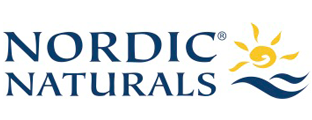



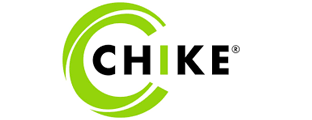













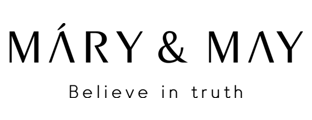




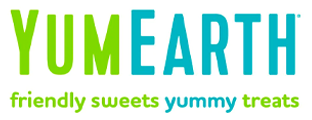





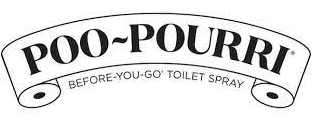

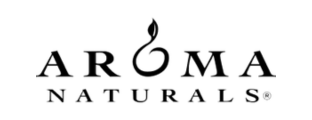





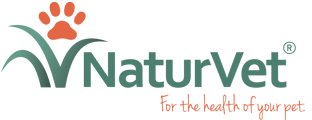






























 Table of Contents
Table of Contents




